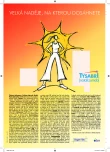Our Experience with MRI Monitoring of Multiple Sclerosis Patients in Clinical Practice
Authors:
M. Vaněčková 1; Z. Seidl 1,2; J. Krásenský 1; D. Horáková 3
; E. Havrdová 3; J. Němcová 2; J. Daneš 1
Authors‘ workplace:
Oddělení MR, Radiodiagnostická klinika 1. LF UK a VFN v Praze
1; Vysoká škola zdravotnická, Praha
2; Neurologická klinika 1. LF UK a VFN v Praze
3
Published in:
Cesk Slov Neurol N 2010; 73/106(6): 716-720
Category:
Short Communication
Overview
Objectives:
To document our monitoring of multiple sclerosis (MS) patients with magnetic resonance imaging (MRI) as routine practice and to demonstrate an optimal MRI monitoring protocol that meets the requirements of imaging pathological processes in MS, on standard equipment and in a short acquisition time. Patients and methods: We inspected 1,138 patients with clinically definite MS and patients with clinically isolated syndrome. The MRI consisted of measurement of the lesion load with FLAIR (fluid attenuated inversion recovery) and measurement of brain atrophy (as a baseline, brain parenchymal fraction was determined; percentage brain reduction per year was measured in the controls). A total of 737 patients who had participated in no previous study was monitored, as well as 181 patients within 5 years of the ASA study and 220 patients who had been monitored for the first symptom of CIS in the SET study. Results: At baseline, the lesion load (LL) median was 1.68 cm3, median BPF was 85.62%, and median EDSS (expanded disability status scale) scored 2. Results: After the first year: (n = 271), median LL was 1.77 cm3, brain reduction –0.14; EDSS = 2. After the second year median LL was 1.86, brain reduction –0.20 and EDSS = 2. Conclusions: The MRI procedure chosen for this work (measurement of lesion load and atrophy) appears to be an optimal protocol for monitoring inflammatory and degenerative changes in MS in the course of routine inspection. It is based on conventional MRI, it is simple, reproducible, short and employs fully automatated software, and is therefore suitable for everyday practice.
Key words:
multiple sclerosis – magnetic resonance imaging – monitoring – lesion load – atrophy measurement
Sources
1. Havrdová E. Roztroušená skleróza. Cesk Slov Neurol N 2008; 71/104(2):121–132.
2. Horáková D. Klinicky izolovaný syndrom a prognostické markery u roztroušené sklerózy. Proč léčit včas? Neurol pro praxi 2008; 9(4): 215–217.
3. Polman CH, Reingold SC, Edan G, Filippi M, Hartung HP, Kappos L et al. Diagnostic criteria for multiple sclerosis: 2005 revisions to the “McDonald Criteria”. Ann Neurol 2005; 58(6): 840–846.
4. Vaněčková M, Seidl Z, Hřebíková T. Protokol vyšetření magnetickou rezonancí pro diagnostiku roztroušené sklerózy mozkomíšní. Praktická radiologie 2008; 4: 31–33.
5. Ge Y. Multiple sclerosis: the role of MR imaging. AJNR Am J Neuroradiol 2006; 27(6): 1165–1176.
6. Vaněčková M, Seidl Z. Roztroušená skleróza mozkomíšní a magnetická rezonance: současnost a nové trendy. Cesk Slov Neurol N 2008; 71/104(6): 664–672.
7. Vaneckova M, Seidl Z, Krasensky J, Havrdova E, Horakova D, Dolezal O et al. Patients’ stratification and correlation of brain MRI parameters to disability progression in multiple sclerosis. Eur Neurol 2009; 61(5): 278–284.
8. Havrdova E, Zivadinov R, Krasensky J, Dwyer MG, Novakova I, Dolezal O et al. Randomized study of interferon beta-1a, low-dose azathioprine, and low--dose corticosteroids in multiple sclerosis. Mult Scler 2009; 15(8): 965–976.
9. Vaněčková M, Seidl Z, Krásenský J, Obenberger J, Havrdová E, Viták T et al. Sledování objemu ložisek u roztroušené sklerózy mozkomíšní magnetickou rezonancí. Cesk Slov Neurol N 2002; 65/98(3): 175–179.
10. Bielekova B, Kadom N, Fisher E, Jeffries N, Ohayon J, Richert N et al. MRI as a marker for disease heterogeneity in multiple sclerosis. Neurology 2005; 65(7): 1071–1076.
11. Lucchinetti C, Bruck W, Parisi J, Scheithauer B, Rodrigez M, Lassman H. Heterogeneity of multiple sclerosis lesions: implications for the pathogenesis of demyelination. Ann Neurol 2000; 47(6): 707–717.
12. Fisher E, Rudick RA, Cutter G Cutter G, Baier M, Miller D, Weinstock-Guttman B et al. Relationship between brain atrophy and disability: an 8-year follow-up study of multiple sclerosis patients. Mult Scler 2000; 6(6): 373–377.
13. Ciccarelli O, Brex AP, Thompson AJ, Miller DH. Disability and lesion load in MS: a reassessment with MS functional composite score and 3D fast FLAIR. J Neurol 2002; 249(1): 18–24.
14. Miller DH, Grossman RI, Reingold SC, McFarland HF. The role of magnetic resonance techniques in understanding and managing multiple sclerosis. Brain 1998; 121(1): 3–24.
15. Schreiber K, Sørensen PS, Koch-Henriksen N, Wagner A, Blinkenberg M, Svarer C et al. Correlations of brain MRI parameters to disability in multiple sclerosis. Acta Neurol Scand 2001; 104(1): 24–30.
16. Barkhof F. MRI in multiple sclerosis: correlation with Expanded Disability Status Scale (EDSS). Mult Scler 1999; 5(4): 283–286.
17. Kapoor R. Neuroprotection in multiple sclerosis: therapeutic strategies and clinical trial design. Curr Opin Neurol 2006; 19(3): 255–259.
18. Bechtold DA, Miller SJ, Dawson AC, Sun Y, Kapoor R, Berry D et al. Axonal protection achieved in a model of multiple sclerosis using lamotrigine. J Neurol 2006; 253(12): 1542–1551.
19. Mangas A, Coveñas R, Geffard M. New drug therapies for multiple sclerosis. Curr Opin Neurol 2010; 23(3): 287–292.
Labels
Paediatric neurology Neurosurgery NeurologyArticle was published in
Czech and Slovak Neurology and Neurosurgery

2010 Issue 6
- Metamizole vs. Tramadol in Postoperative Analgesia
- Memantine in Dementia Therapy – Current Findings and Possible Future Applications
- Memantine Eases Daily Life for Patients and Caregivers
- Metamizole at a Glance and in Practice – Effective Non-Opioid Analgesic for All Ages
- Advances in the Treatment of Myasthenia Gravis on the Horizon
Most read in this issue
- Spontaneous Regression of Sequestrated Lumbar Disc Herniation – Three Case Reports
- Assessment of State of Health and Capacity for Work in Post-Stroke Patients – Case Reports
- The Bristol Activities of Daily Living Scale BADLS-CZ for the Evaluation of Patients with Dementia
- Autisms
